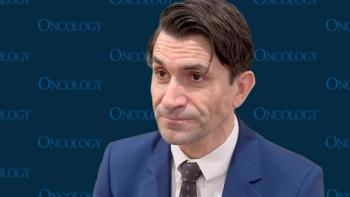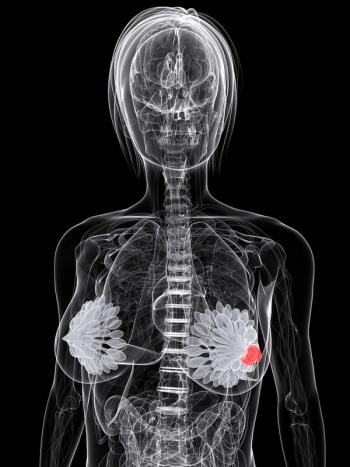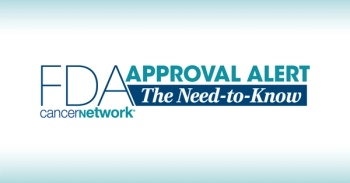
Phase 2 Cilta-Cel Efficacy Data Highlight Potential Fulfillment of Unmet Need in Early-Line R/R Multiple Myeloma
Updated findings from the phase 2 CARTITUDE-2 trial highlighted the promising efficacy of ciltacabtagene autoleucel in patients with relapsed or refractory multiple myeloma following early relapse.
Ciltacabtagene autoleucel (cilta-cel; Carvykti) demonstrated promising efficacy and tolerability in adult patients with relapsed or refractory multiple myeloma following early relapse and has expanded treatment options for the adult patients who have received 4 or more lines of therapy following its FDA approval, according to updated results from the phase 2 CARTITUTDE trial (NCT04133636) presented during the
Results from the study showed that patients in cohort B treated with cilta-cel (n = 19) achieved an overall response rate (ORR) of 100% (95% CI, 82.4%-100.0%). Twenty-one percent of patients achieved a complete response (CR), 68% experienced a stringent CR, and 11% had a very good partial response. Investigators noted that responses deepened at the longer follow-up with 90% (95% CI, 66.9%-98.7%) of patients achieving a CR or better. The median time to first response was 0.95 months (range, 0.9-9.7) while median time to best response was 5.09 months (range, 0.9-11.8).
The multicohort CARTITUDE-2 study evaluated cilta-cel in different multiple myeloma patient populations as well as earlier-line settings. Patients in cohort B had early relapse after therapy with a proteosome inhibitor and immunomodulary drug. This was defined as progression within 12 months after autologous stem cell transplant (ASCT) or from the start of anti-multiple myeloma therapy for patients who did not have a stem cell transplant. The median number of prior lines of therapy received in cohort B was 1 (range, 1-1) and 78.9% of patients previously received an ASCT.
With a cutoff of June 2022, the median follow-up of updated CARTITUDE-2 cohort B safety and efficacy data was 18.0 months (range, 5.2-26.3). Three deaths occurred due to progressive disease; 2 of these 3 patients had high-risk cytogenetic profiles and investigators noted that none had extramedullary disease.
Investigators highlighted that the persistence and expansion of the CAR-T cells was consistent with the data collected in the phase 1/2 CARTITUDE-1 trial (NCT03548207). “Peak expansion of CAR-T cells occurred on day 13 [range, 9.8-14.8] and median persistence was 76 days [range, 26.9-273.1]… [the] CD4/CD8 CAR-positive T ratio was stable around 1:1 post cilta-cel infusion,” study authors wrote.
Additional findings showed that the median duration of response (DOR), median progression-free survival, and median overall survival were all not yet reached. The 18-month PFS rate was 83% (95% CI, 55.9%-94.3%) and the 18-month OS rate was 83% (95% CI, 55.7%-94.2%).
The safety of cilta-cel was predictable as well as manageable and the most common any grade hematologic adverse effects (AEs) were neutropenia (95%), anemia (58%), thrombocytopenia (58%), lymphopenia (47%), and leukopenia (32%). These AEs were also reported as grade 3/4 in 90%, 47%, 26%, 47%, and 32% of patients, respectively.
Additionally, cytokine release syndrome (CRS) was a CAR-T-related AE that occurred in 84% of patients at any grade and at grade 3/4 in 5%, with a median time to onset of 8 days (range, 5-11) and a median duration of 3.5 days (range, 1-7). It was resolved in all cases and some patients were given tocilizumab (63%) and corticosteroids (21%).
Any grade neurotoxicity occurred in 26% (n = 5) of patients at any grade. One patient had grade 1 immune effector cell-associated neurotoxicity syndrome and1 patient had grade 3 or greater movement and neurocognitive treatment with emergent AEs that had not yet resolved at the data cutoff. Another patient with parkinsonism had grade 3 or greater CRS but achieved a CR and follow-up is ongoing.
The primary end point of CARTITUDE-2 was minimal residual disease (MRD) negativity at a 10-5 threshold assessed by next-generation sequencing/flow. Secondary end points included ORR, DOR, time to response, AEs, and severity of AEs.
Patients had a median age of 58 years (range, 44-67) and males were 73.7% of the patient population. Three patients (15.8%) had a refractory status of triple class, while 15 patients (78.9%) were refractory to their last line of therapy. The median time since initial diagnosis to enrollment was 1.15 years (range, 0.5-1.9) and 20% of patients had a high-risk cytogenetic profile with del17p. Fifteen patients had MRD-evaluable samples and 14 patients were MRD-negative at the determined threshold while 2 of the 3 patients with high-risk cytogenetics were MRD-negative. Additionally, outpatient administration of the agent is currently being explored and 1 patient was treated in the outpatient setting.
Investigators concluded that data on the safety profile and efficacy of cilta-cel in patients with multiple myeloma who experienced early treatment failure or clinical relapse support further exploration of the agent in earlier lines of therapy.
Reference
Van de Donk N, Agha M, Cohen AD, et al. Ciltacabtagene autoleucel (Cilta-cel), a BCMA-directed CAR-T cell therapy, in patients with multiple myeloma (MM) and early relapse after initial therapy: CARTITUDE-2 cohort B 18-month follow-up. Blood. 2022;140(suppl 1):7536-7537. doi:10.1182/blood-2022-159169
Newsletter
Stay up to date on recent advances in the multidisciplinary approach to cancer.

















































































